Senior art history major Jayme Clemente was working in trench No. 35 in July at an archaeological dig 20 miles northeast of Florence, Italy, when something caught her eye.
“I saw something green in the dirt,” she recalls. Green is the color of oxidized bronze.
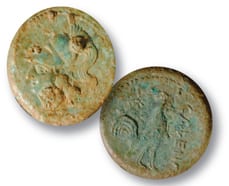 |
| Oxidized-green bronze Etruscan coin. |
“When you’ve been staring at this light brown mixture of dirt and you see something that is not in the same color palette — it was just an exhilarating feeling to know that there was something in the ground.”
Her trench supervisor raced over and confirmed the first coin discovery of SMU’s 2008 Poggio Colla Field School season in the Mugello Valley. Clemente then worked as slowly as she could to extract the item from the dirt because bronze coins are very fragile after being buried for 2,000 years.
“Your first reaction is to get it out as fast as you can, but you have to take your time and be very patient” to deliver it to the dig conservator in one piece, Clemente says. She is fascinated by the coin’s ability to reveal so many details about the culture in which it was used. Through her research she learned this particular coin was struck far to the south, somewhere between Rome and Naples, between 275 and 250 BCE.
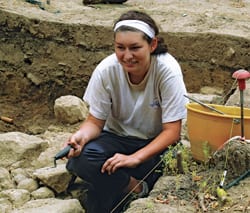 |
| Jayme Clemente digs at Poggio Colla. |
As the site’s field manual says: “It’s not what you find, it’s what you find out.”
Clemente learned her lessons well, says P. Gregory Warden, University Distinguished Professor of Art History. He also serves as the Mugello Valley Archaeological Project’s (MVAP) principal investigator and co-director of its Poggio Colla Field School, an internationally recognized research training center in which SMU has participated since 1995.
Clemente was one of a dozen SMU students who were joined at the field school last summer by students from Dartmouth, Princeton and other universities.
The Poggio Colla site spans most of Etruscan history, from 700 BCE to the town’s destruction by the Romans around 178 BCE, which makes the site very rare. It also is distinctive because of what is not there. The Etruscans picked beautiful, easily defended hilltops for their settlements. As a result, generation after generation built new cities on top of their sites. That means many have 2,000 years of other civilizations on top of Etruscan artifacts, Warden says. Not so Poggio Colla, which is all Etruscan.
The oxidized-green bronze Etruscan coin discovered by Clemente features the head of Athena on one side, a rooster on the reverse.
No one knows why the Etruscans disappeared. Most of what archaeologists have learned about the culture in the past 40 years comes from funerary remains that represent the death rituals of the wealthy. Poggio Colla is different, Warden says. It represents an entire settlement, including tombs, a temple, a pottery factory and an artisan community. Excavations of workshops and living quarters are yielding details about Etruscan life to scholars from SMU and its partners, the University of Pennsylvania Museum of Archaeology and Franklin and Marshall College in Lancaster, Pennsylvania.
Recent finds included a large stone column base that probably belonged to the temple and a ritual pit within the sanctuary where the Etruscans placed a series of sacred objects such as gold thread, two statue bases and two bronze bowls. One of the bowls rests atop the bones of a suckling pig that was sacrificed as part of a purification ritual.
The temple is revealing new information about the Etruscans, who had a theocratic social structure and were considered “the most religious peoples of the ancient Mediterranean,” Warden says. “We can show where the priest was standing and how the objects were placed in this sacred pit with attention to the cardinal points of the compass, reflecting Etruscan religious beliefs and their idea of the sacredness of space.”
The findings are so striking that the British Museum invited Warden to deliver a lecture there in December 2007 on “Ritual and Destruction at the Etruscan Site of Poggio Colla.”
The Italian government long had planned to create a regional archaeological museum in the area. The many discoveries at Poggio Colla moved that plan along, and Warden was a special guest at the museum’s opening in December.
All the artifacts found at Poggio Colla are the property of the Italian government and remain in that country. Because of connections created through the MVAP, more than 350 Etruscan artifacts from Italian museums and 100 artifacts from the field school site will be on loan to the Meadows Museum starting in January for the largest and most comprehensive Etruscan exhibits ever staged in the United States. Warden also will teach a course on “Etruscan Art and Archaeology” for the SMU Master of Liberal Studies program in the spring.
The coin that Clemente found is expected to be part of the exhibit.
“I never knew that it would be put into a museum,” she says, “but I feel pride in knowing that I was a part of the process.” — Deborah Wormser
Related links:
Research blog: Archaeological dig marked by landmark Etruscan exhibit
WSJ: Etruscan treasures from Tuscany
USAToday: Ancient Etruscan treasures go on display in Dallas
Bryn Mawr Classical Review: Review of the exhibit
P. Gregory Warden
Meadows: “From the Temple and the Tomb”
Meadows: “New Light on the Etruscans”
Poggio Colla Field School
Student research projects
2008 field school student diaries
2008 field school directors’ diaries
Mugello Valley Region
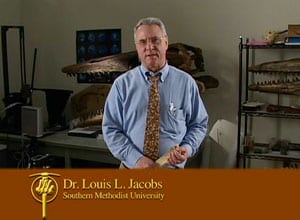 The video features many other respected paleontologists from around the world, all of them talking about the work they do and its importance to science and society. The goal of the video is to educate students, teachers and the public about vertebrate paleontologists and the importance of their work.
The video features many other respected paleontologists from around the world, all of them talking about the work they do and its importance to science and society. The goal of the video is to educate students, teachers and the public about vertebrate paleontologists and the importance of their work.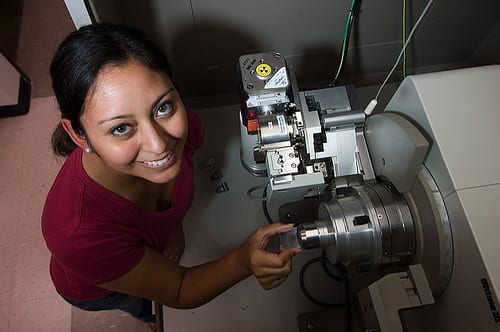
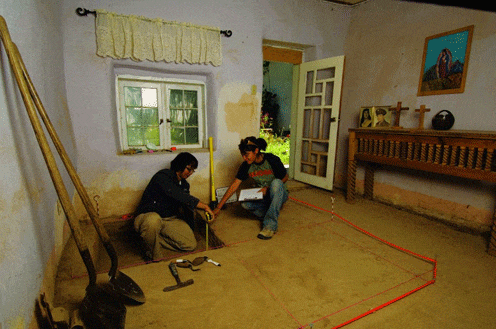 For hundreds of years the beauty and mystery of Taos, New Mexico, have lured thousands of settlers and visitors, from the ancestors of the Taos and Picuris Indians and Spanish settlers to skiing enthusiasts and artists.
For hundreds of years the beauty and mystery of Taos, New Mexico, have lured thousands of settlers and visitors, from the ancestors of the Taos and Picuris Indians and Spanish settlers to skiing enthusiasts and artists.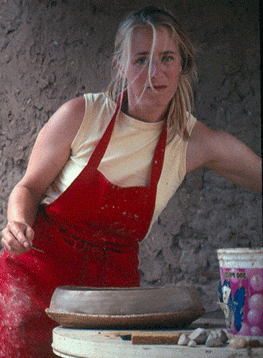

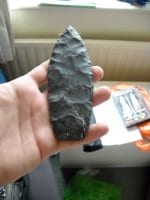 New research by a U.S.-U.K. team that included SMU archaeology student
New research by a U.S.-U.K. team that included SMU archaeology student 
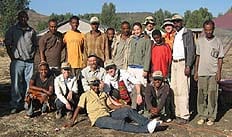 A team of researchers led by paleobotanist
A team of researchers led by paleobotanist 